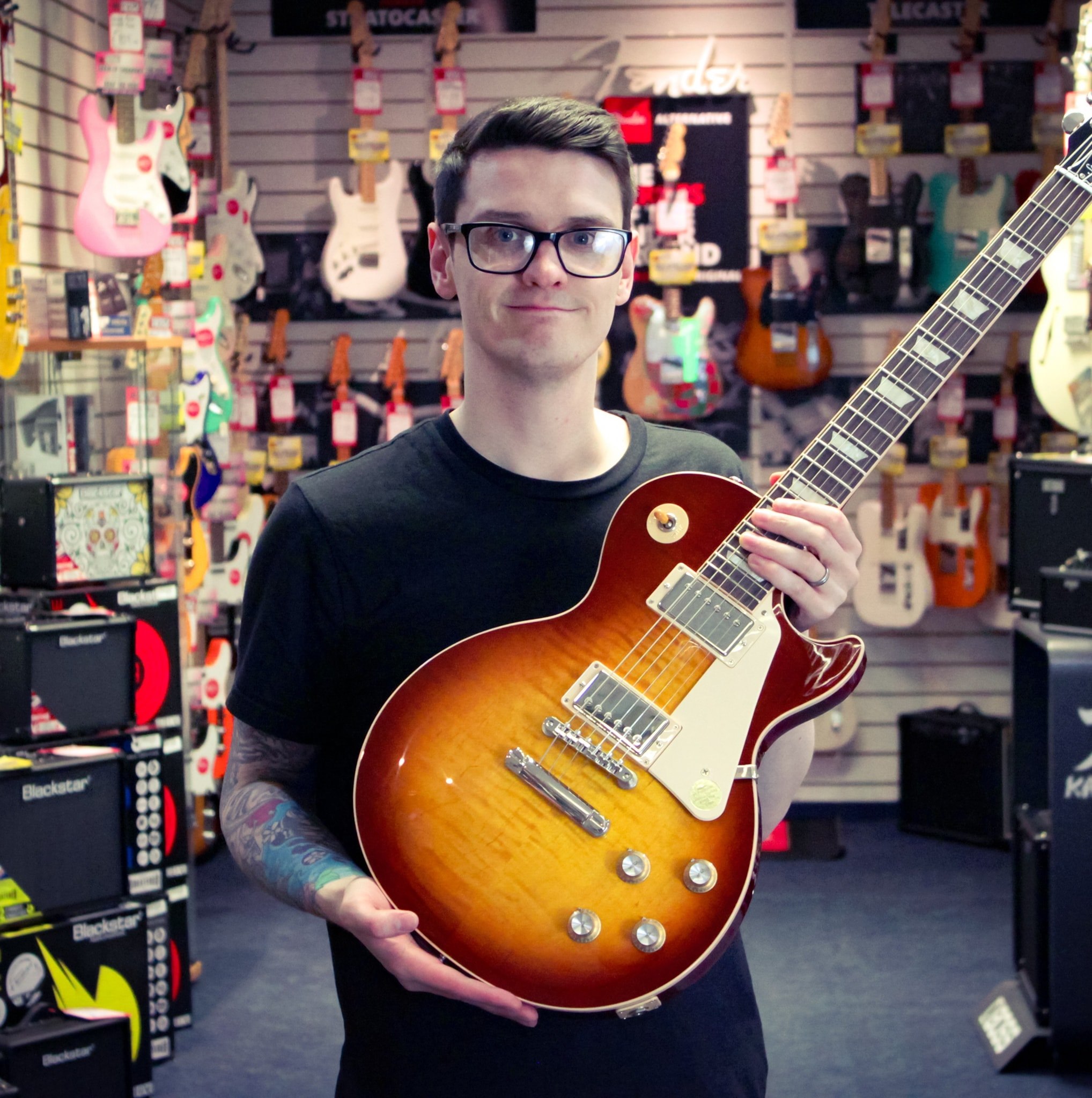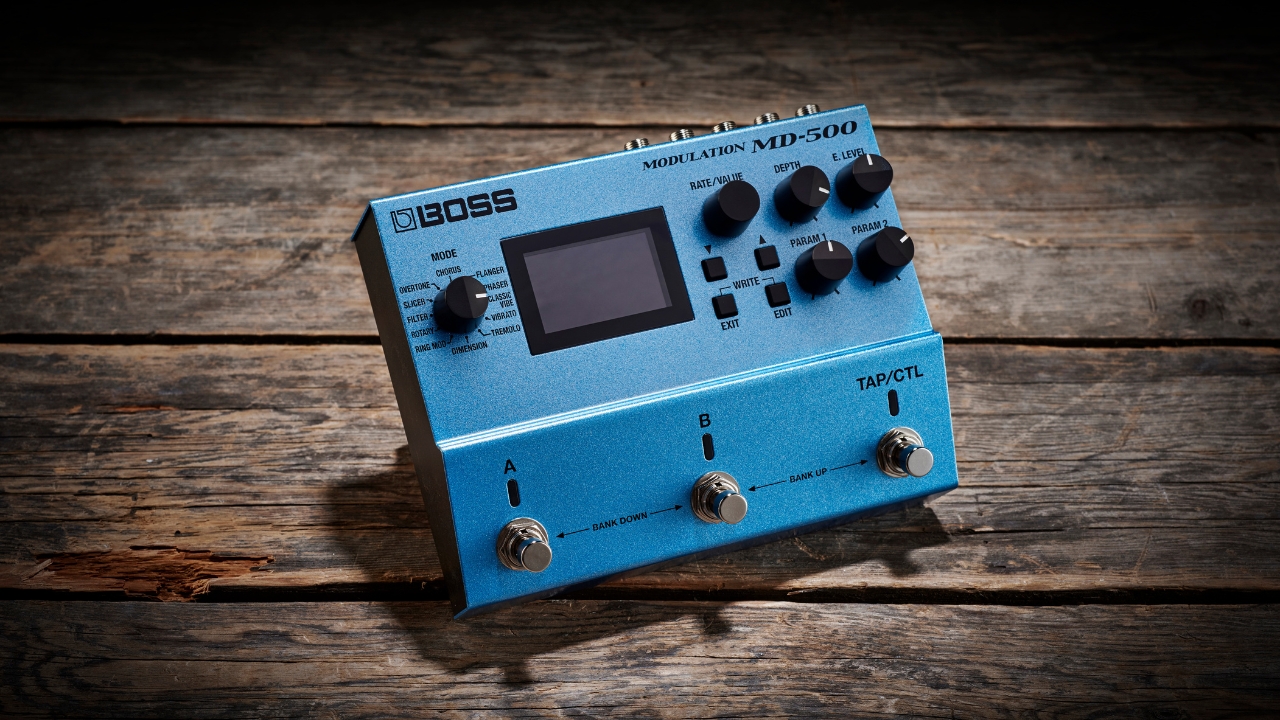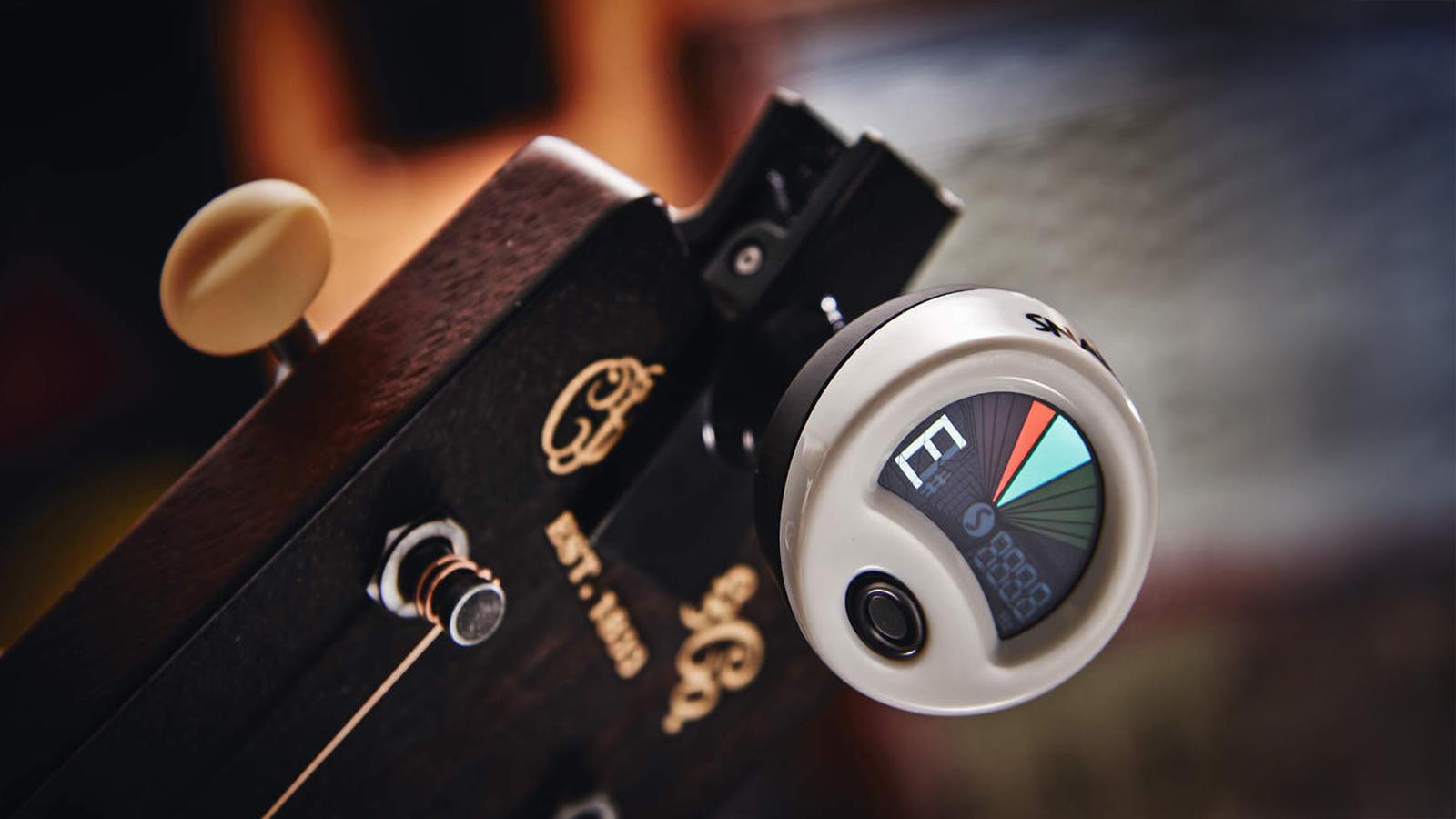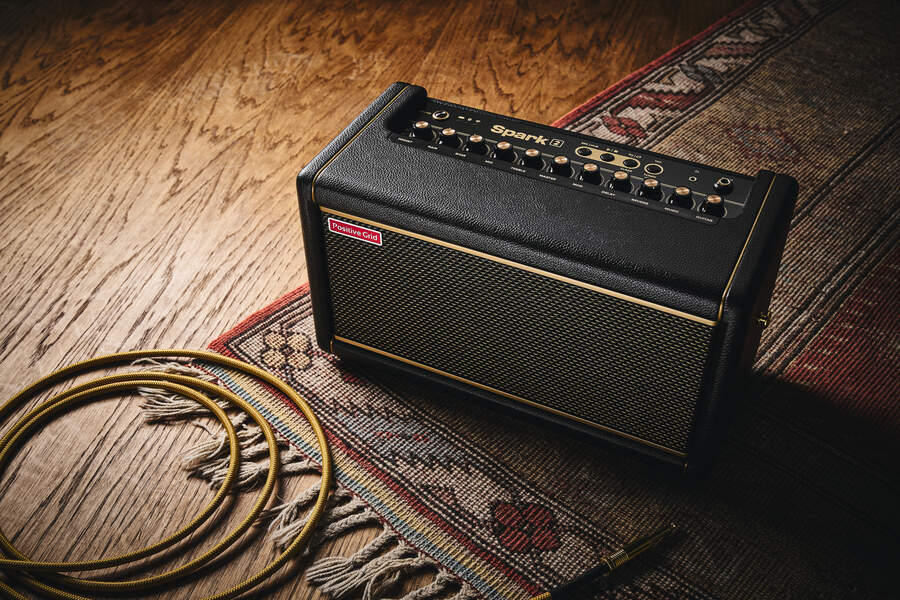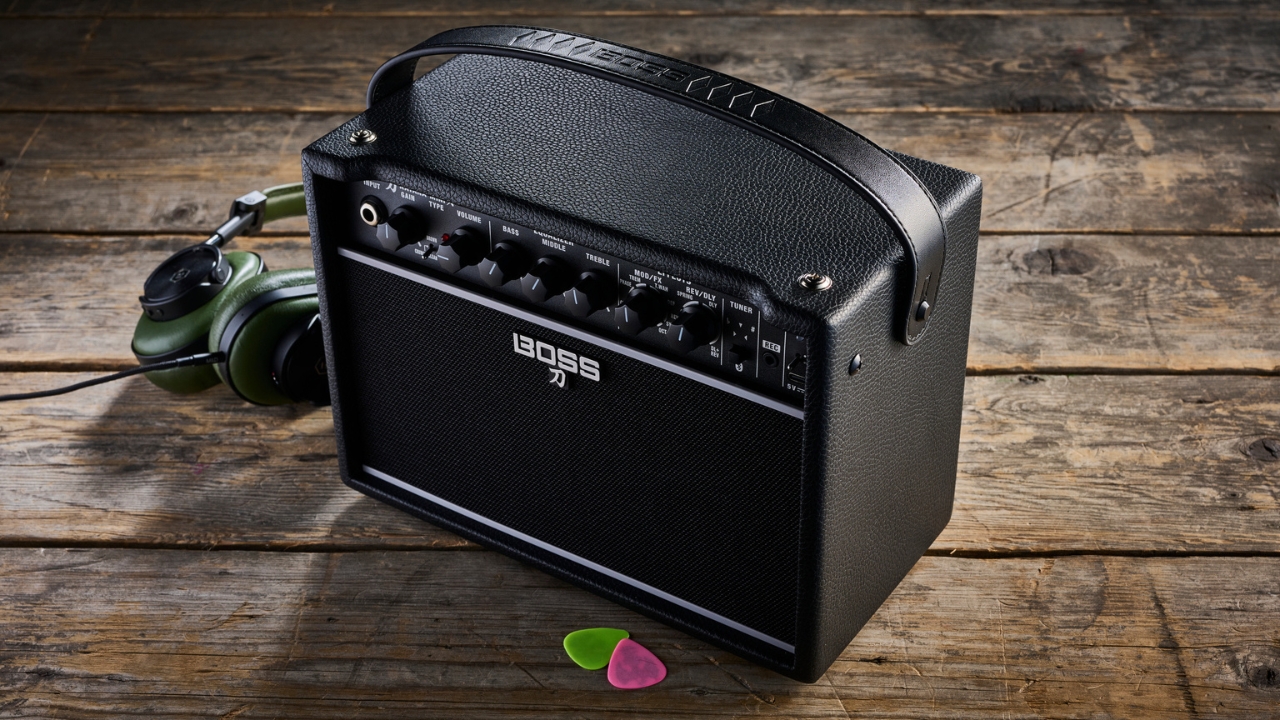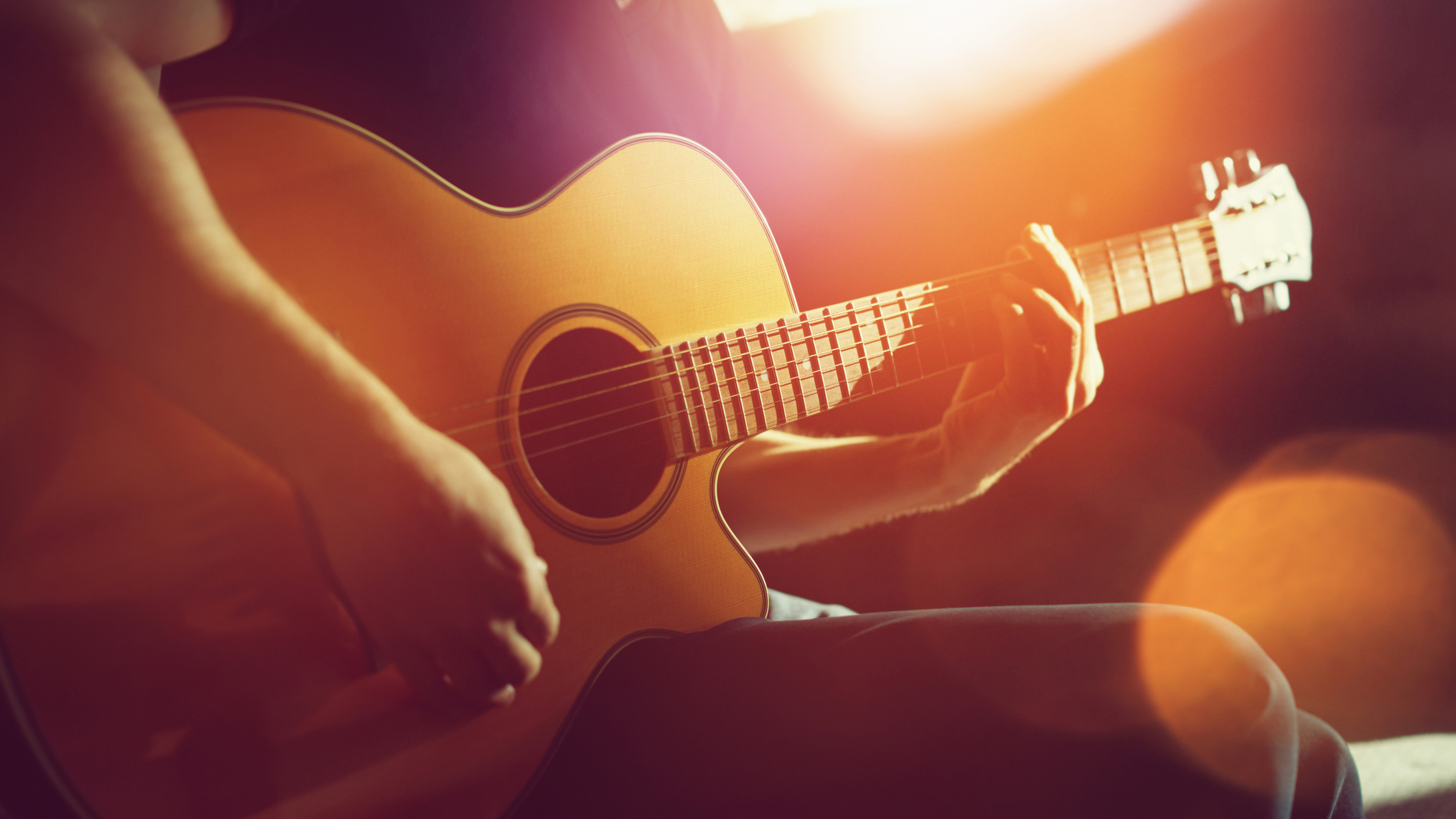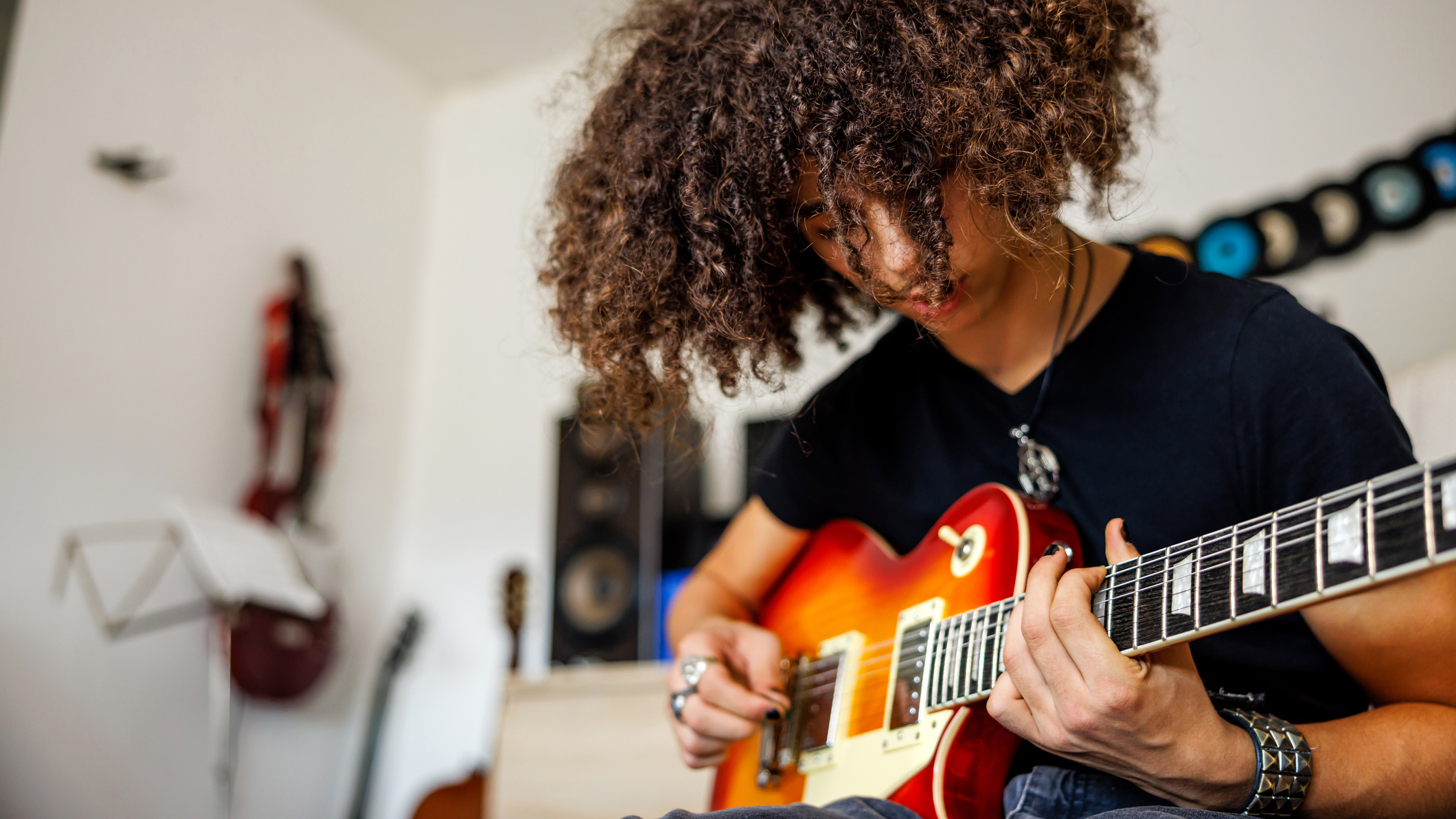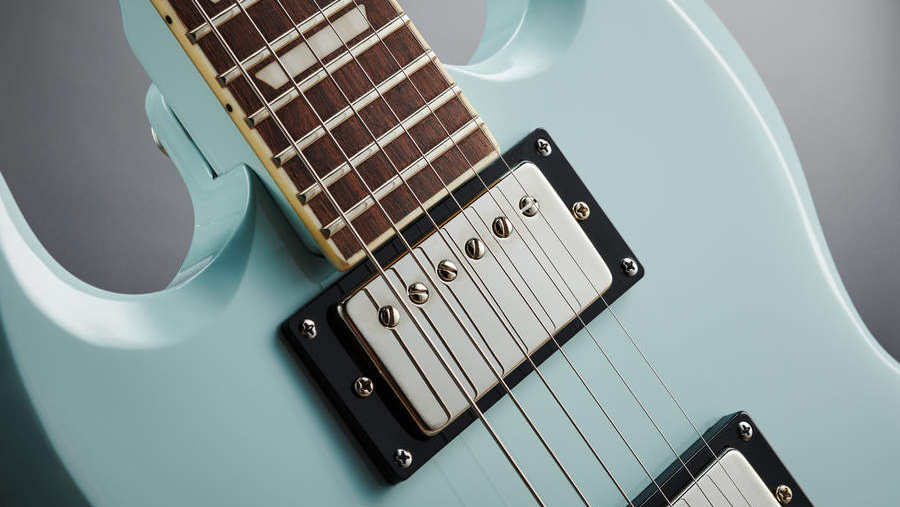Best acoustic guitars 2025: Our pick of the very best beginner, intermediate and top-end acoustics
From high quality entry-level models, to top-of-the-range collector’s pieces, we look at the best acoustic guitars available today
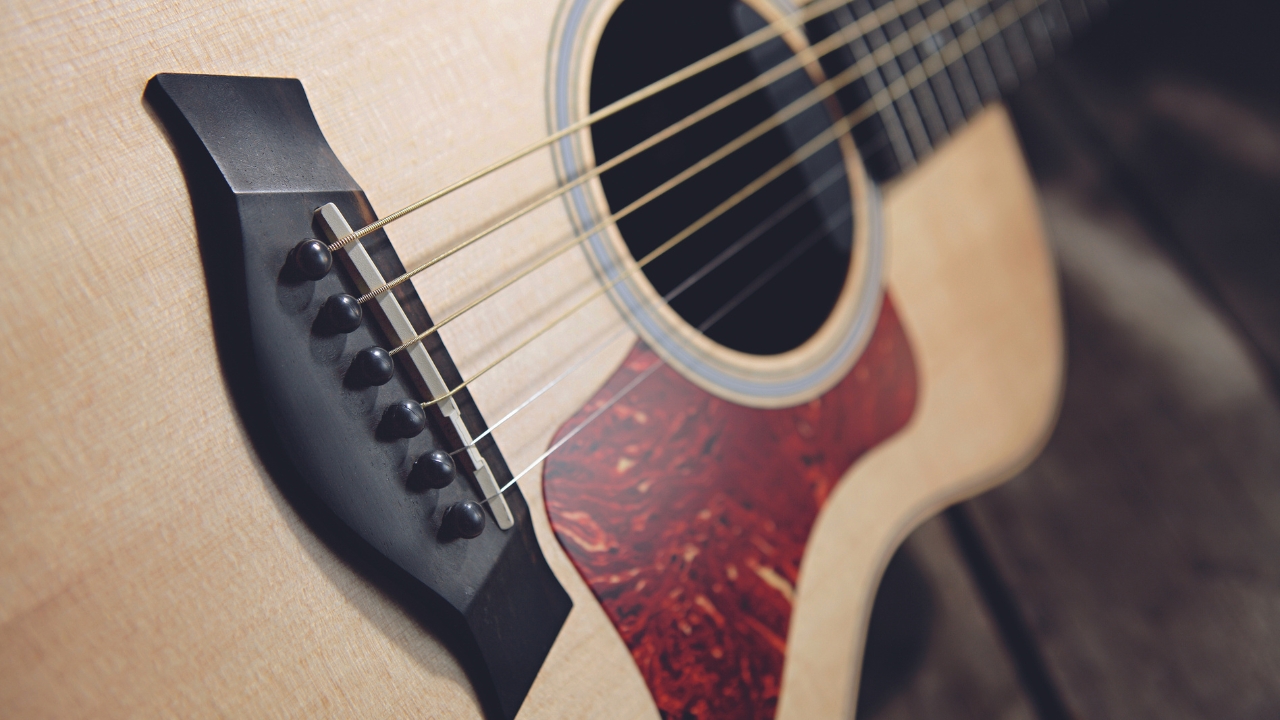
Trying to work out the single best acoustic guitar from such a huge field of instruments is a tough call, nigh on impossible in fact. The pantheon of acoustic guitars is extremely varied, going from the most basic of budget instruments to those hitting four or five figures, so pulling a single instrument from that pile is never going to please everyone.
To make it easier to decide which new acoustic guitar you should purchase, we decided to split them by use case to help give you an easier time. We've got decades of experience playing acoustic guitars, so using that knowledge helps us inform the choices in our guides and provide a more useful recommendation for your next purchase. We've tested more acoustic guitars than we could throw a Sitka spruce stick at, so you can trust we know what we're talking about when we say an acoustic is well suited to a particular task.
Whether you're new to the instrument, need something on a budget, or have been playing for years and want the very best of the best, you'll find an excellent selection of acoustic guitars here to meet any need. If you're new to acoustic and like to stock up on knowledge before you buy, go have a look at our FAQs section which features loads of common questions answered by the guitar gurus here at Guitar Player. To see the best acoustic guitars available today, keep on scrolling...
Our top picks
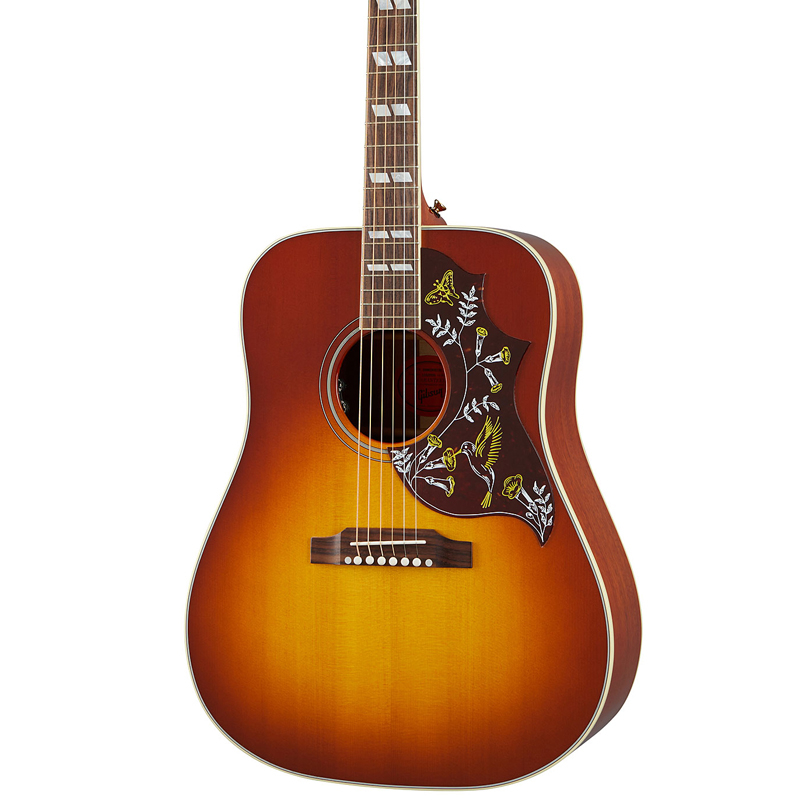
The Gibson Hummingbird is one of those guitars that never fails to make us guitarists smile. There’s something about the look, sound, and feel of the ‘hummer’ that acts like an auditory comfort blanket. Heard so many times on so many huge records, the powerful, direct tone has become almost instantly recognizable.
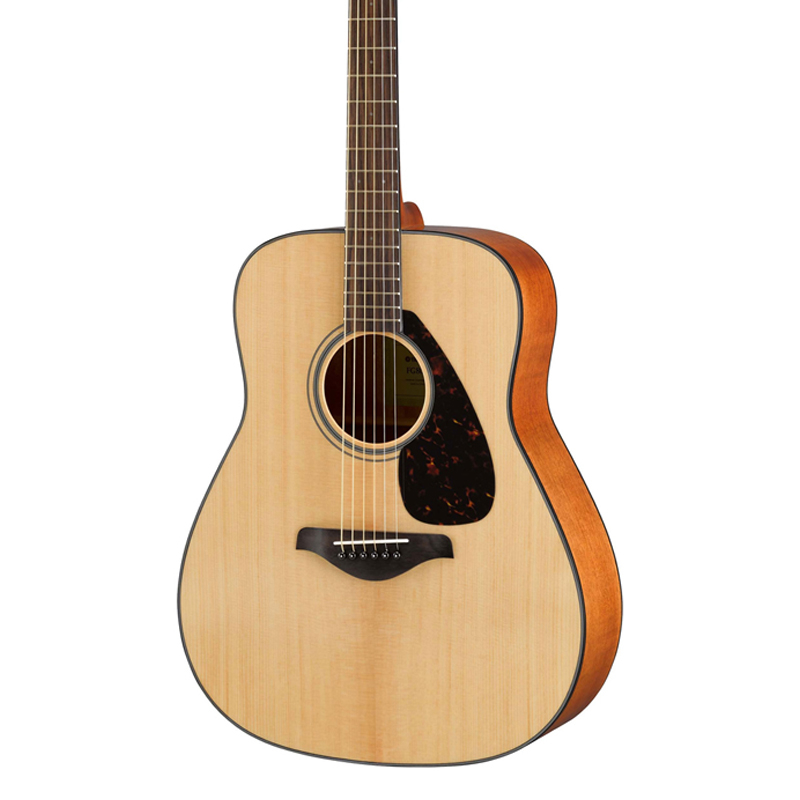
The Yamaha FG800 has been around for a while, but it's still one of our top picks for those on a budget. It's packing a solid top at an incredibly reasonable price point, alongside Yamaha's renowned build quality, which gives you an acoustic guitar that sounds far more expensive than it actually is.
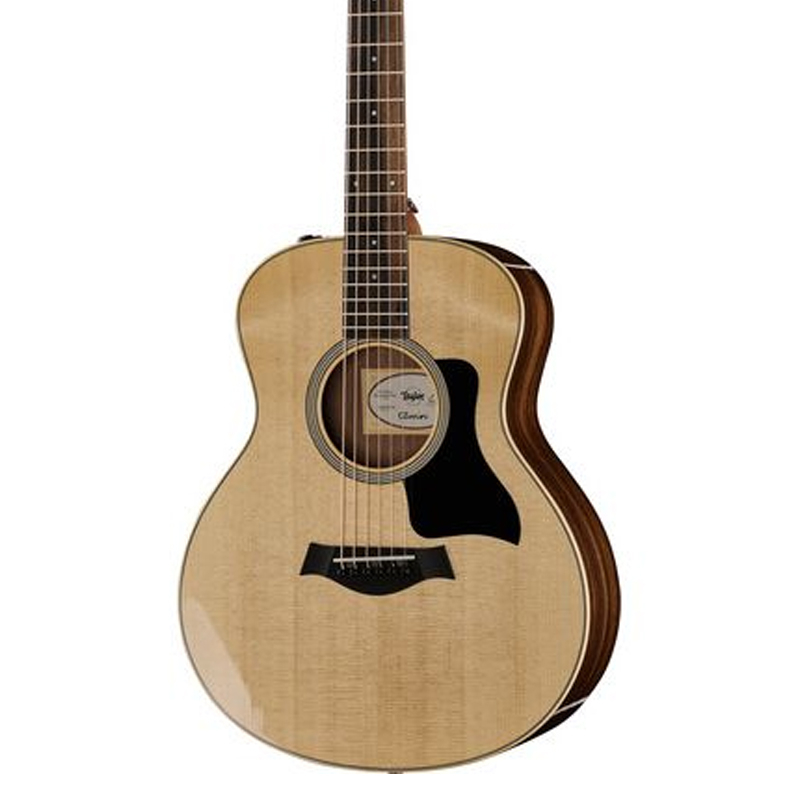
The GS Mini doesn’t just sound great ‘for a smaller guitar’ – it sounds great, period. It projects really nicely and offers a balanced frequency range. It's not a super cheap option, but for beginners it's definitely the best choice out there if you want a quality acoustic that will grow with you.
Best overall
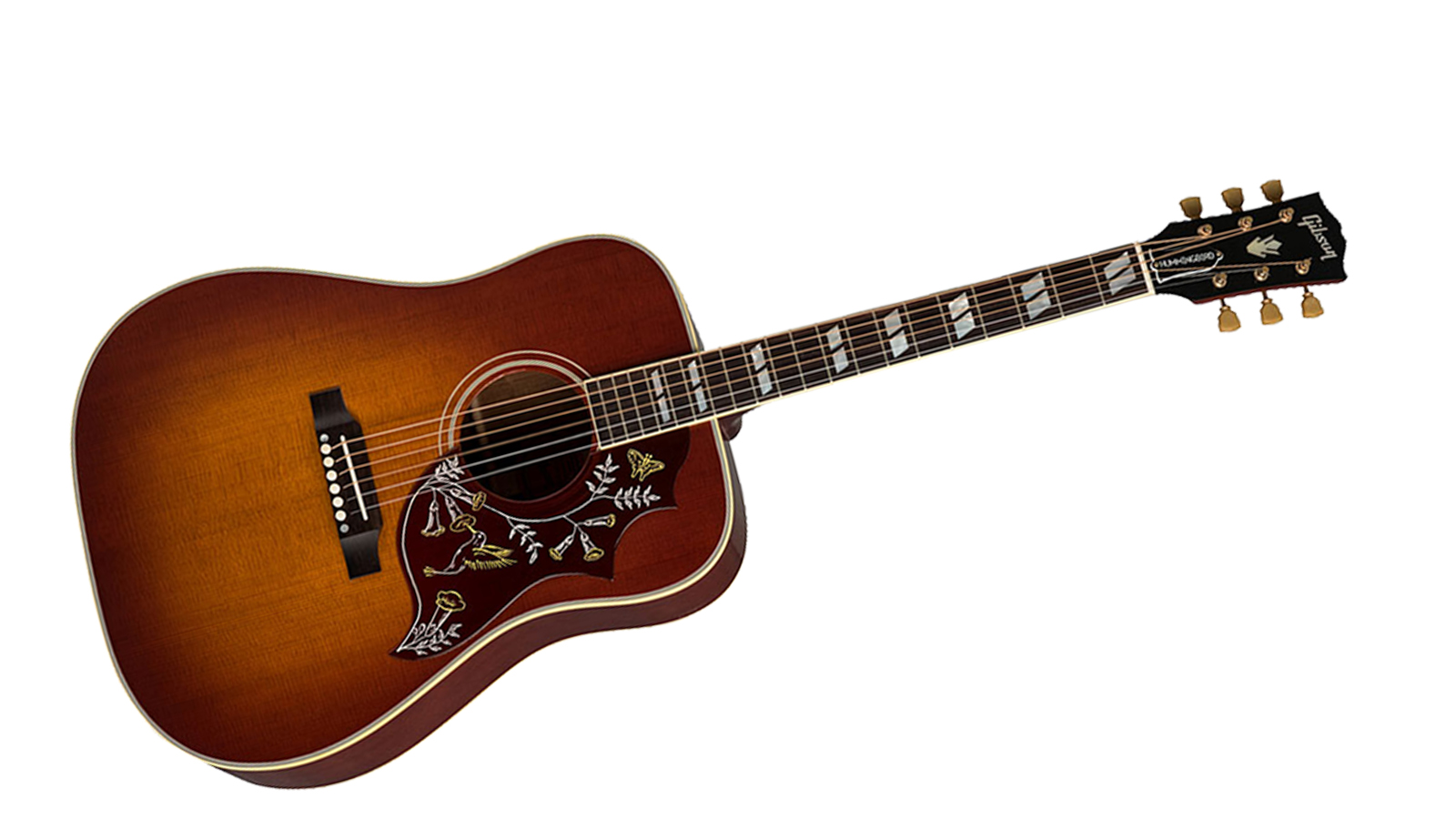
1. Gibson Hummingbird Original
Our expert review:
Specifications
Reasons to buy
Reasons to avoid
The Gibson Hummingbird is one of those guitars that never fails to make us guitarists smile. There’s something about the look, sound and feel of the ‘hummer’ that acts like an auditory comfort blanket. We’ve heard it so many times before on so many huge records that the powerful, direct tone has become almost instantly recognizable – and we love it.
Gibson’s first-ever square-shouldered model, the Hummingbird utilizes perhaps the greatest pairing of tonewoods, sitka spruce and mahogany. The interplay between these prized top and body woods will fill any room with jangly vintage charm, all the while dishing out some punchy, rich-sounding tones to help your playing transcend. The top is treated, so sounds weathered and played in, allowing you to get the best from your Hummingbird straight out of the gate.
We do like the Hummingbird, a lot, but there’s one thing we aren’t so fond of that we’d like to mention – it’s a pretty massive guitar. We know it’s no bigger than a standard dreadnought, but the square shoulders especially make this guitar feel bulky and sometimes awkward to play. Granted, that shape is what helps to produce the massive sound we love so much, but it’s still a bit too much of a handful sometimes.
Best budget
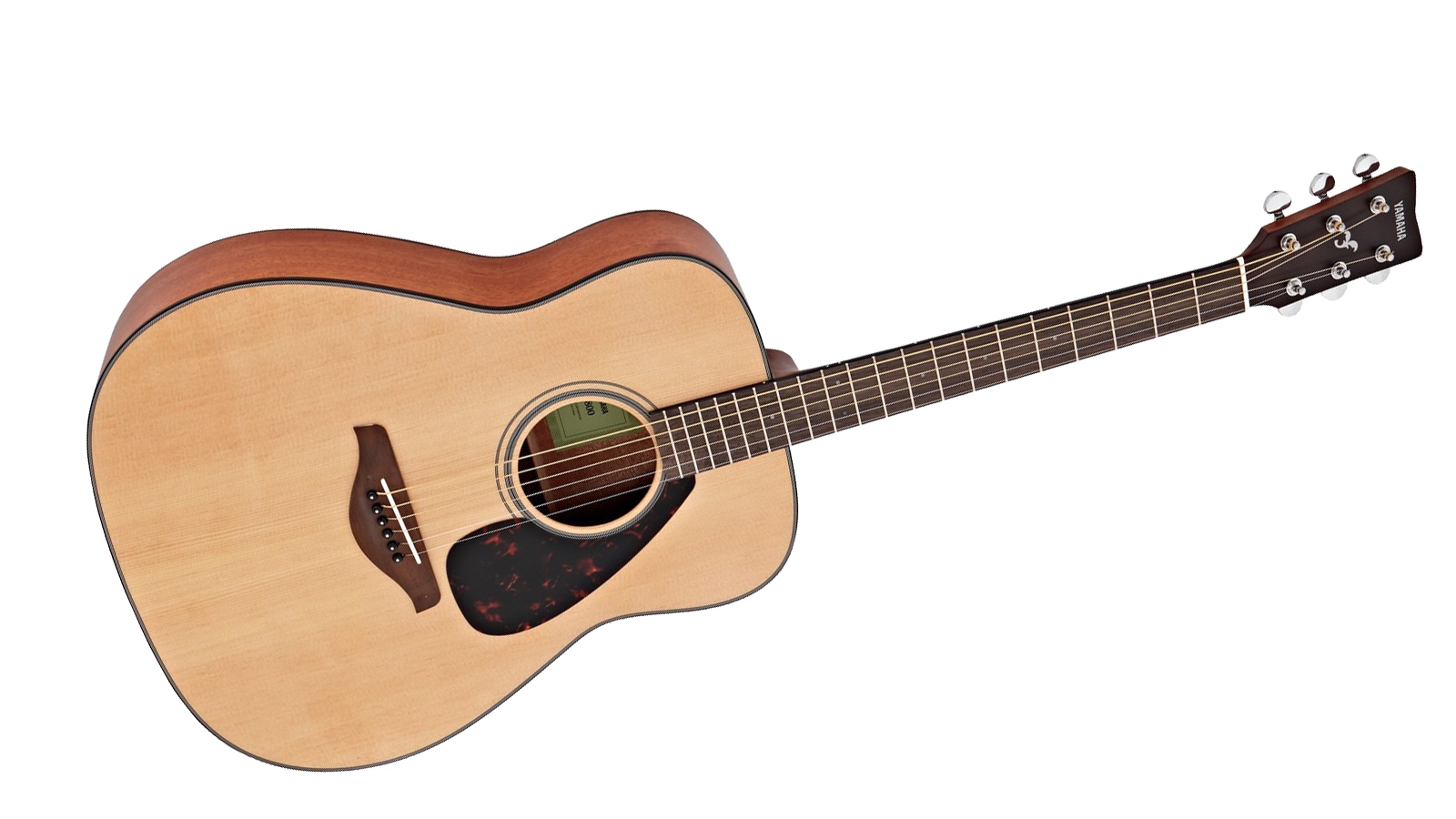
2. Yamaha FG800
Our expert review:
Specifications
Reasons to buy
Reasons to avoid
Yamaha is a company that has made their name as one of the most iconic and versatile manufacturers that the world has seen. They make everything from golf clubs to motorcycles - but it’s their acoustic guitars we’re interested in, specifically the FG800.
The Yamaha FG800 is a pure tone machine. For the impressively low price tag, you get a solid spruce top with nato and okoume back and sides. This combination offers up a seriously gutsy tone, more than capable of keeping up in an acoustic jam session. The warm, rich tone that comes from the dreadnought body size makes the FG800 a singer-songwriter’s best friend, delivering full-sounding accompaniment to vocals of the vast majority of styles.
If you’re in the market for your first ever acoustic guitar, or even just a spare for when you’re on the road, you can’t go too far wrong with the Yamaha FG800. It’s solid, reliable, affordable and sounds like it’s more expensive than it is. What more could you want?
Best for beginners
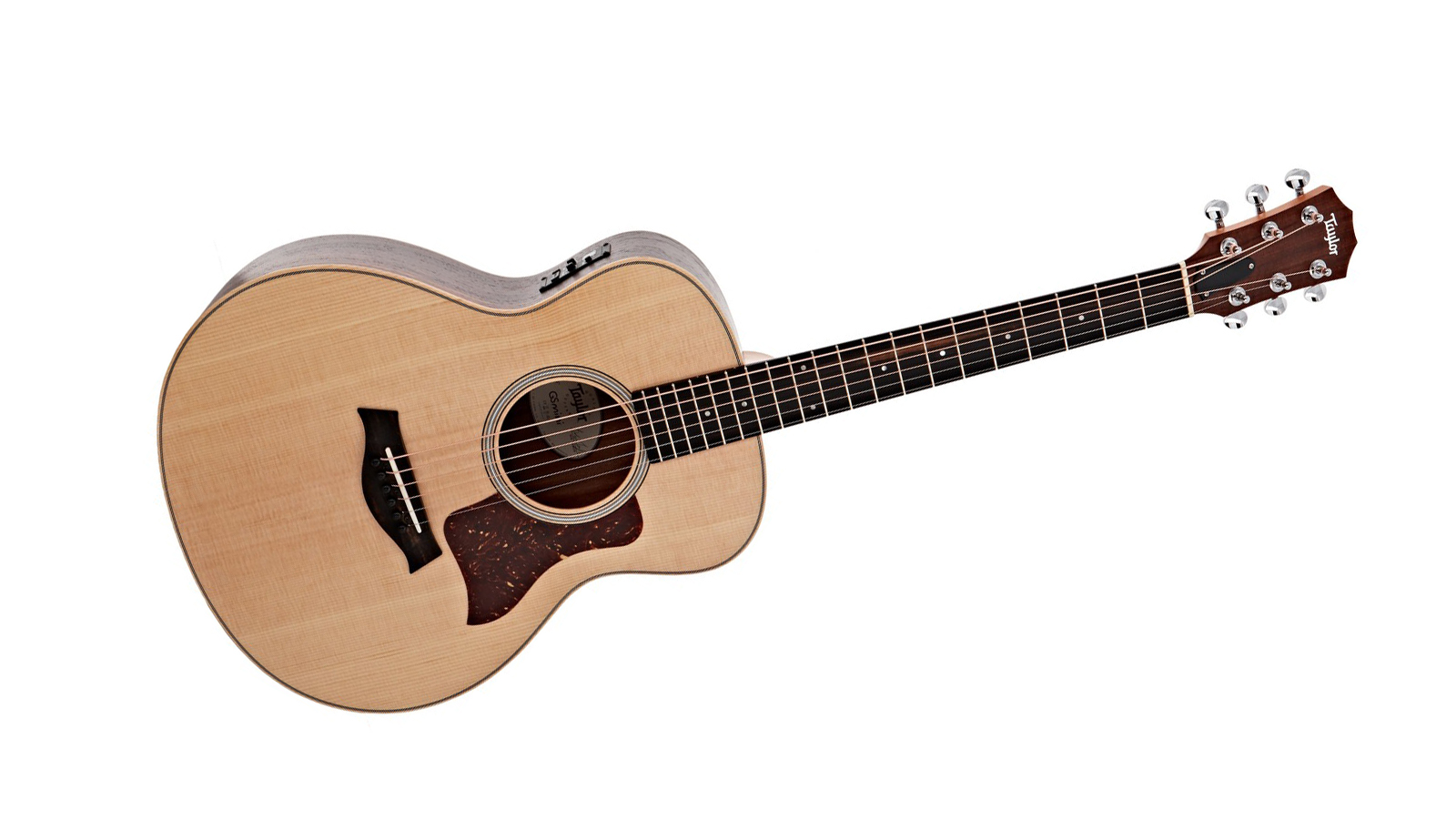
3. Taylor GS Mini-e Rosewood
Our expert review:
Specifications
Reasons to buy
Reasons to avoid
The GS Mini doesn’t just sound great ‘for a smaller guitar’ – it sounds great, period. It projects really nicely and offers a balanced frequency range. The bass response is probably more impressive than you might think from a guitar this size, and the top end is clear and sparkly.
The combination of the solid sitka spruce top and the smaller grand symphony body shape gives you a dynamic and responsive guitar. The rosewood back and sides also helps a little in the mid range.
This model is equipped with Taylor’s ES-B pickup system too. This helps represent the guitar’s acoustic qualities via an amp or PA system. There’s also an on board tuner which is really useful, plus it comes shipped in a good quality gig bag.
Best electro-acoustic
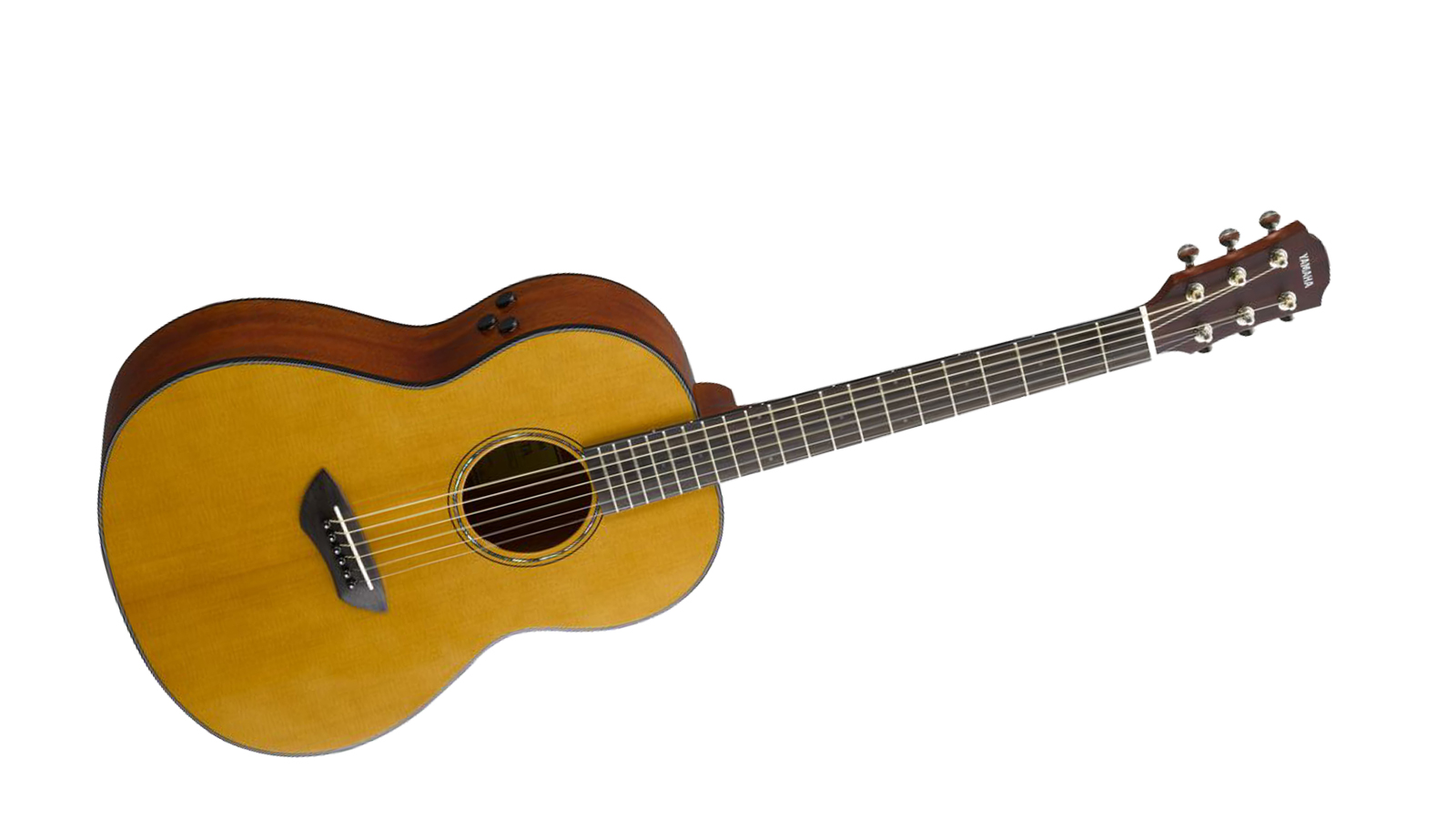
4. Yamaha TransAcoustic CSF-TA
Our expert review:
Specifications
Reasons to buy
Reasons to avoid
Now, Yamaha has been known to push the boundaries when it comes to innovating new ideas for their instruments - and the TransAcoustic series just might be their biggest flex to date.
TransAcoustic is, in a nutshell, a system that adds effects to your unplugged acoustic guitar. The back panel of the CSF-TA features an actuator that vibrates in response to string vibration, and those vibrations are conveyed through the guitar's body and into the air inside the guitar. It's pretty out there, and it's okay if we lost you there for a minute - but fancy new effects aren't the only thing about the CSF-TA.
Independent of this incredible tech, the CSF-TA's solid spruce top and mahogany back and sides deliver bags of punch, clarity and power - impressive for such a small-bodied guitar. We were shocked to note that this parlor has a rich depth about its tone, something which again we wouldn't expect from a guitar this size. If you're partial to a smaller acoustic, and don't want to shell out the big bucks, the CSF-TA is absolutely worth considering.
Best small body
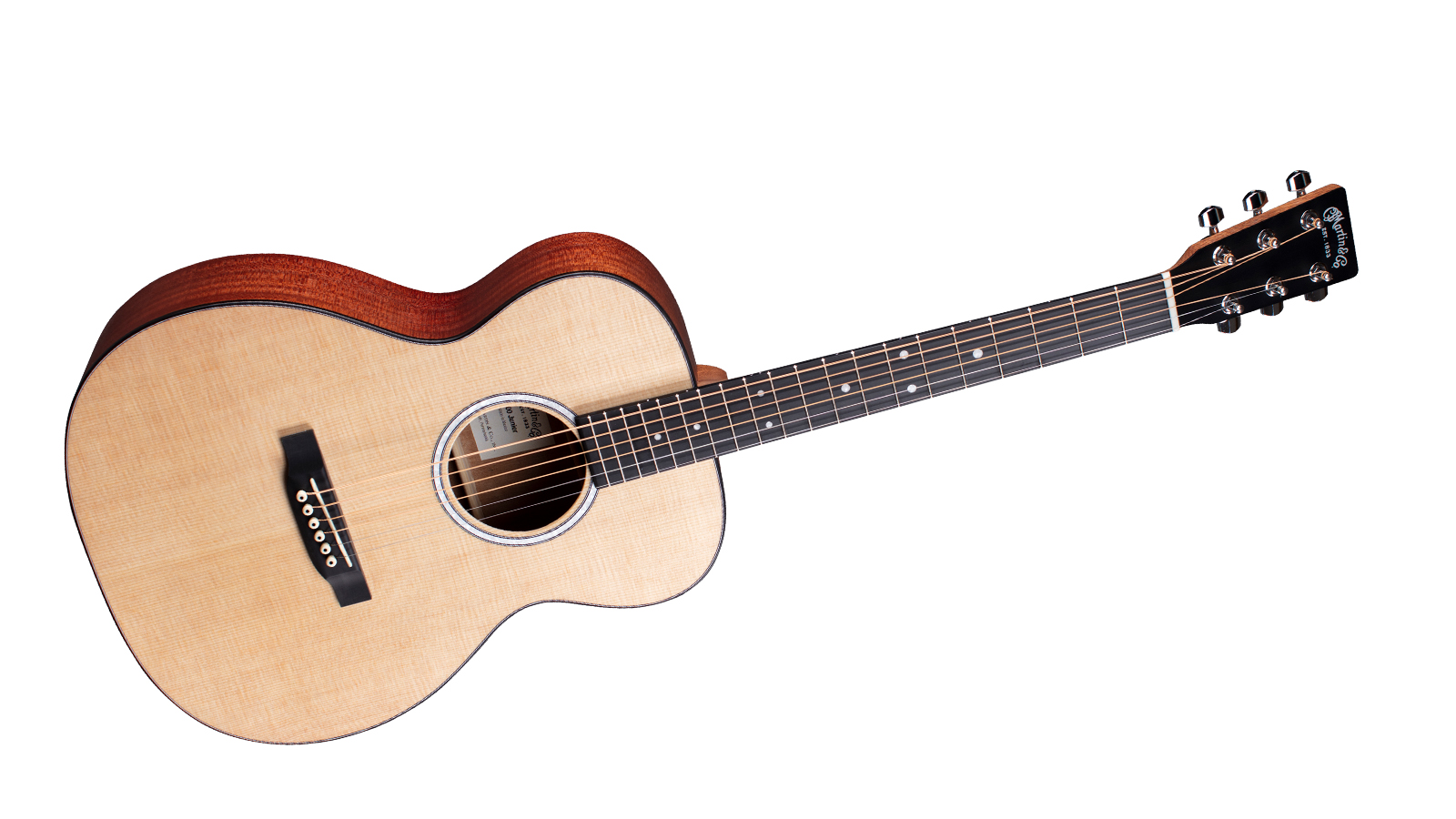
5. Martin 000 JR-10
Our expert review:
Specifications
Reasons to buy
Reasons to avoid
When people think of Martin guitars, they often think of D-18s, 28s and other acoustics that cost the same as a family car. Well, while those are part of Martin’s product ranges, you’ll be pleased to know that they also cater for us folk who can’t always spend four digits, as much as we’d like to.
The 000 JR-10 comes in at the lower end of Martin’s ‘budget’ range in terms of pricing, but the specs, playability and tone vastly outweigh the price tag. The all-solid JR-10 is a slightly shrunken 000 acoustic, with the smaller body and scale length creating an all-round lovely playing experience.
You’d think that an even smaller body would be detrimental to the tone, but you'd be wrong. While it doesn’t quite have the guts of a D-28, the tone that this Junior produces has some serious punch. A solid Sitka spruce top takes care of the top end, while the mahogany back and sides join forces to provide warmth, depth of tone and a little bit of extra resonance.
Best jumbo acoustic
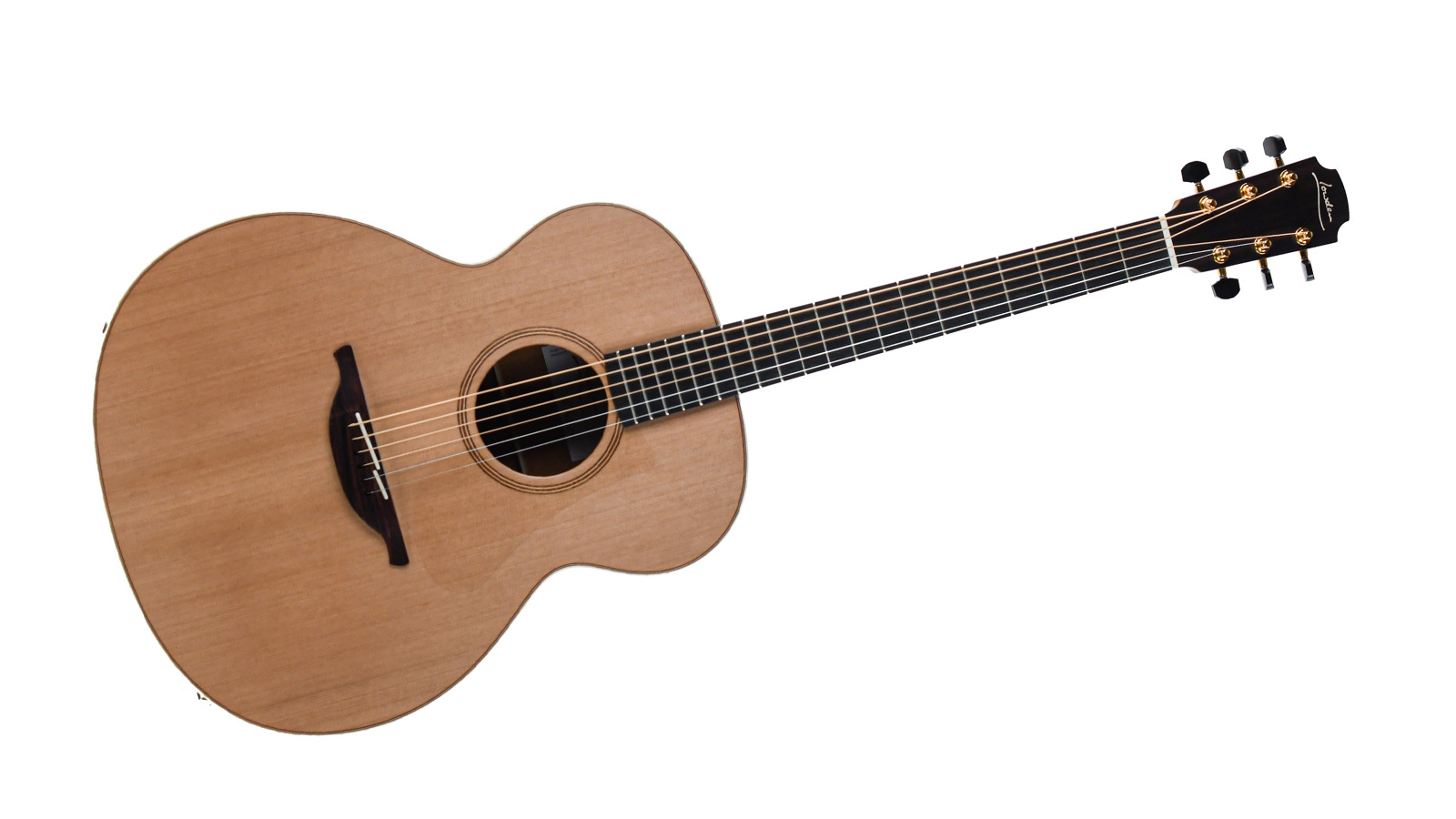
6. Lowden O-22
Our expert review:
Specifications
Reasons to buy
Reasons to avoid
Lowden is one of the most respected names in the realm of acoustic guitars, and they are used by some of the biggest artists in the world. They’re harmonically rich, complex and have a wonderfully balanced frequency range.
The O-22 is incredibly dynamic and responsive – it will put out exactly what you put in. The red cedar top and mahogany back and sides help deliver a rich and warm tone, with plenty of clarity in the top end. It’s great for performing and recording with, so will serve you well in any application. Even though the Lowden O-22 is essentially a jumbo guitar, it avoids ever sounding muddy or boomy but retains that full-bodied warmth.
We could have picked any Lowden to sit in our list of the best acoustic guitars really, but we’ve chosen the O-22 for its superb dynamics, balanced tone and suitability for both strummers and fingerpickers alike.
More options...
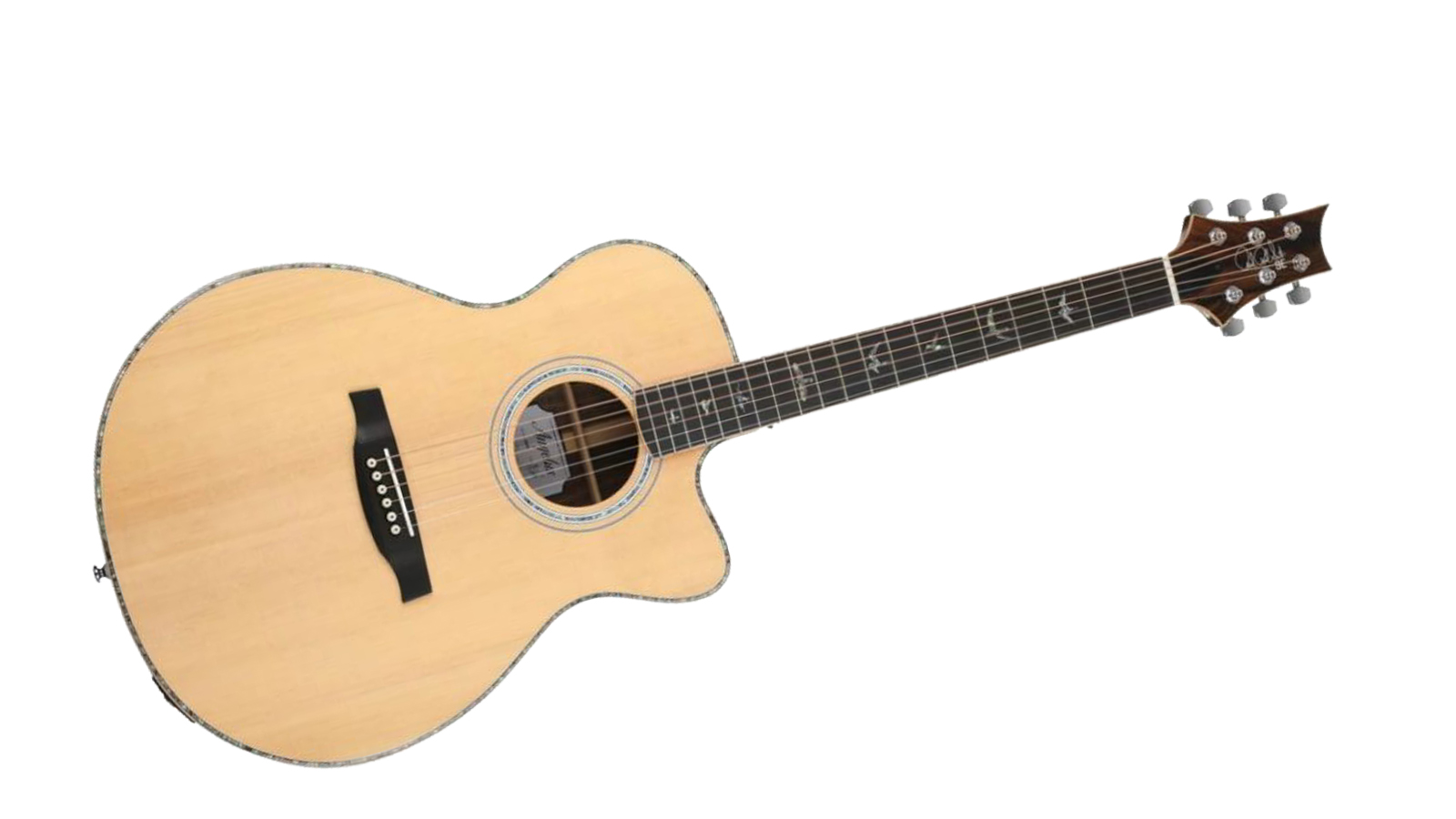
7. PRS SE A60E
Our expert review:
Specifications
Reasons to buy
Reasons to avoid
From the kings of glitz and glamour, comes something a little less in-your-face. PRS’s SE range has made its name in the world of electric guitars, and now it’s time to see how they fare when it comes to acoustics, with the very pretty A60E.
Like much of this guide (and most other acoustic guitars on the market), a solid sitka spruce top adorns this model. However, things start to get interesting when we delve into the solid ziricote body. Ziricote is an alternative to rosewood and has had some serious comparisons made about its tonal qualities. It’s closer to Brazilian rosewood in terms of density, and is a brilliant way to get close to that tone on a reasonable budget. Of course, it’s not quite the same, but overall the A60E still possesses that little bit of magic.
The iconic abalone bird inlays and flamed maple accents scream PRS, even from a distance - but when you take into consideration the care and attention paid to this guitar in the manufacturing and finishing process, you start to realize just how perfect these SE’s can sound and play. We currently live in a weird world, where value for money is more important than ever before, and although you could spend a little more on a USA-made Martin or Taylor, is there much point when a PRS SE is calling your name?
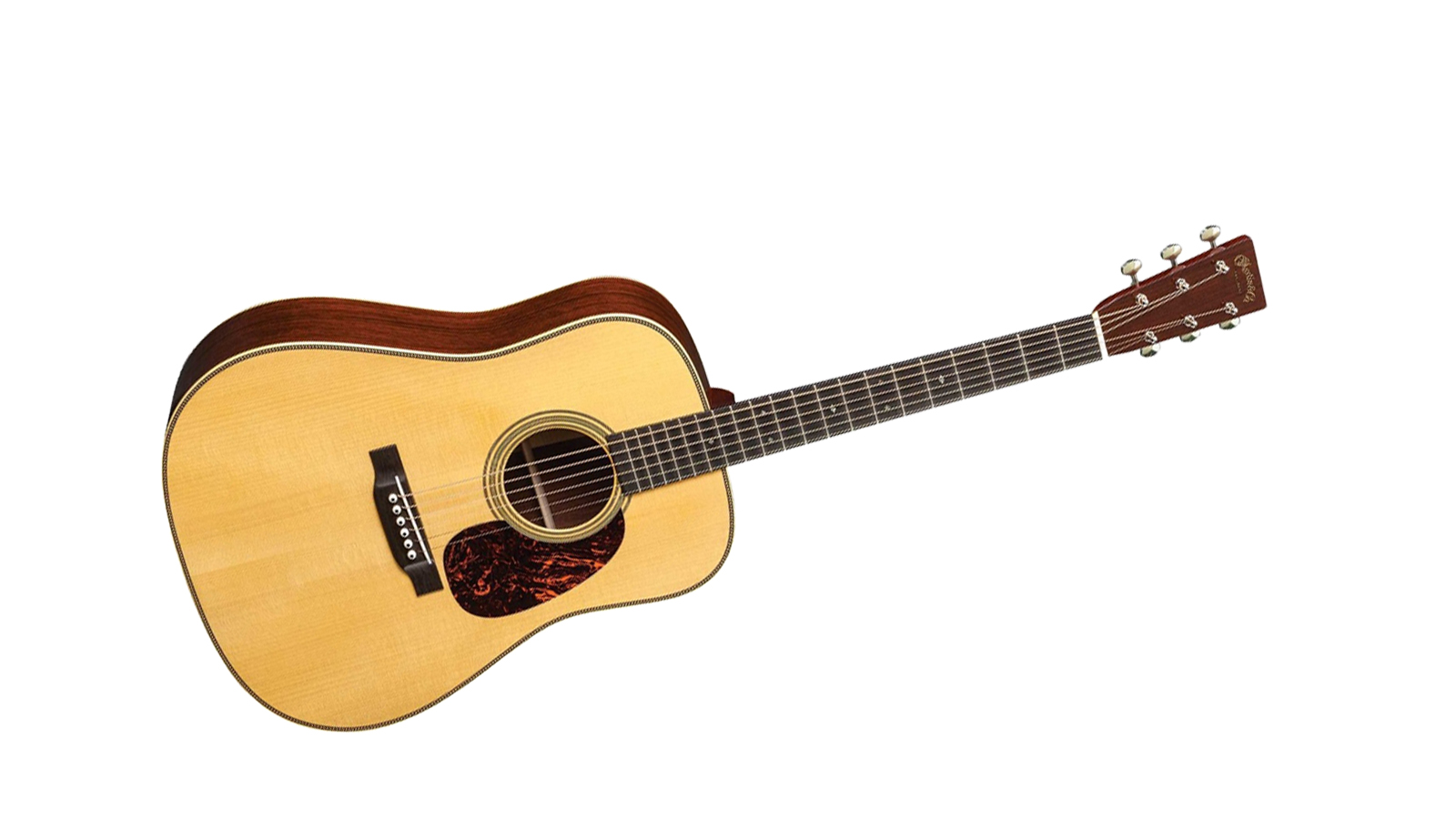
8. Martin D-28 Authentic 1937 VTS
Our expert review:
Specifications
Reasons to buy
Reasons to avoid
There are few acoustic guitars as iconic as the Martin D-28 - especially a ‘golden era’ D-28. But if, like most of us, you don’t have that kind of money knocking around, then this might be the next best thing.
Crafted from highly sought-after Adirondack spruce, the top and braces get Martin’s own VTS (Vintage Tone System) thermochemical treatment. This removes moisture from the wood at very high temperatures, allowing the top to resonate as freely as possible, and to sound as sweet as a genuine vintage Martin. If that wasn’t enough harmonious beauty, the Madagascan rosewood back and sides help produce a rich low end and sparkling clarity - with dark resonant undertones. Combined, this leads to a balanced and truly satisfying tone that will make this guitar worth every penny.
At close to seven grand, it’s a price tag that some will still find pretty prohibitive - and that’s fair enough. This guitar is the culmination of decades of R&D and millions of dollars worth of research, and that comes with a price. But honestly, listen to this guitar and it will all make sense. And then, like us, you’ll want one. Or two.
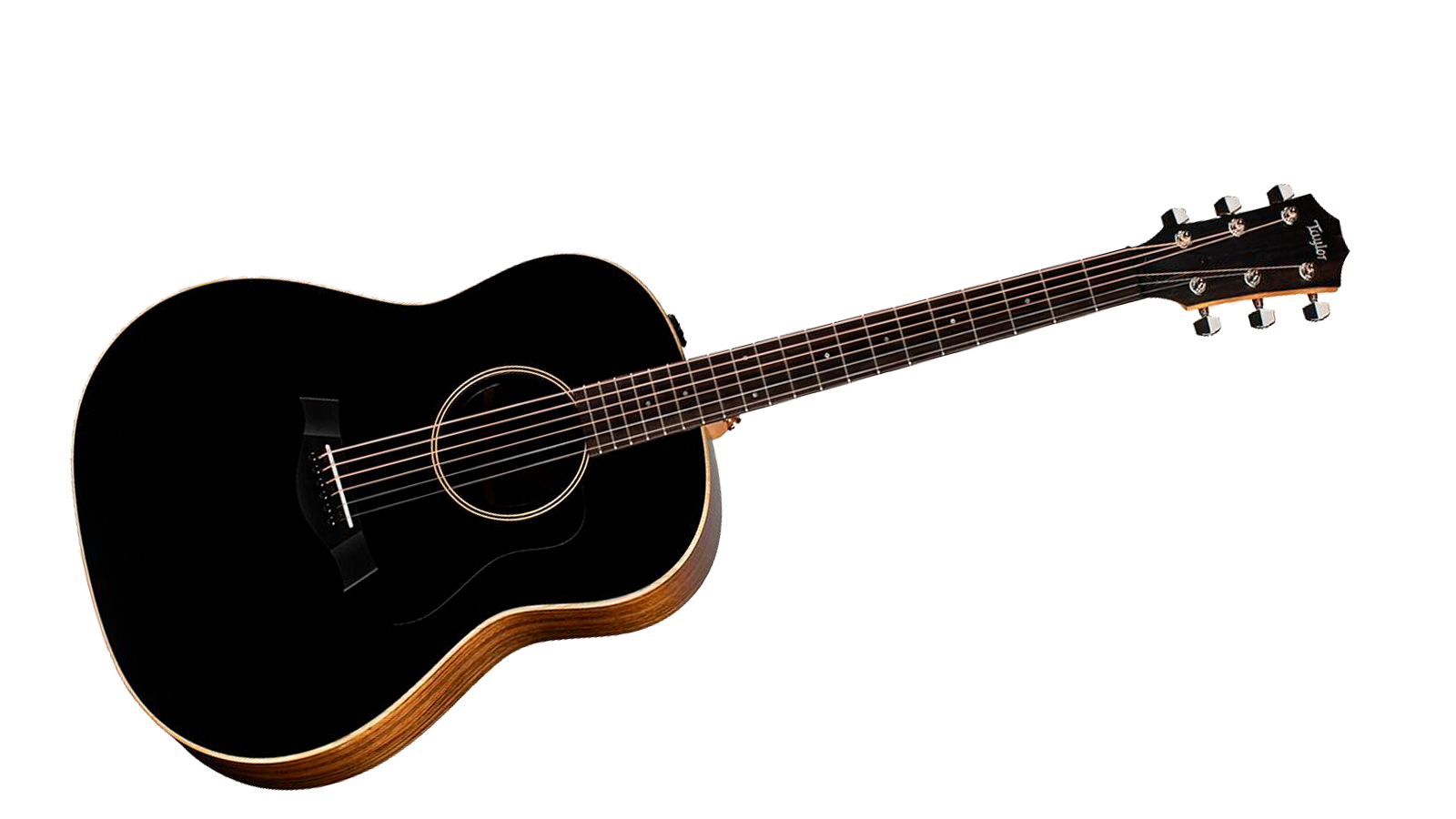
9. Taylor American Dream AD17e Black Top
Our expert review:
Specifications
Reasons to buy
Reasons to avoid
Taylor’s American Dream series of guitars, although one of their lowest-priced offerings, is far from cheap. Crafted from all-solid tonewoods (some more unusual than others, however), the AD17e is ready to be played, enjoyed and cherished.
Another slope-shouldered dreadnought (that Taylor refers to as a ‘Grand Pacific’ body shape), the AD17e consists again of a solid spruce top, but this time with a solid walnut body. This pairing of tonewoods, along with the eucalyptus fingerboard, creates a responsive and powerful tone that is equal parts rich and bright. Walnut is quite similar to rosewood in tonality - it adds a pleasing presence in the midrange, although it sounds a little brighter and stiffer since the wood is a bit more dense. Think of it sitting tonally between rosewood and mahogany.
The matte-finished top and satin back and sides allow the AD17e to breathe, creating an intense resonance that feels organic and natural. Unfortunately, it’ll only be a matter of time before that matte top is covered in finger marks, pick scratches and other playing wear, but if you don’t mind that kind of thing, the AD17e could be a great choice.
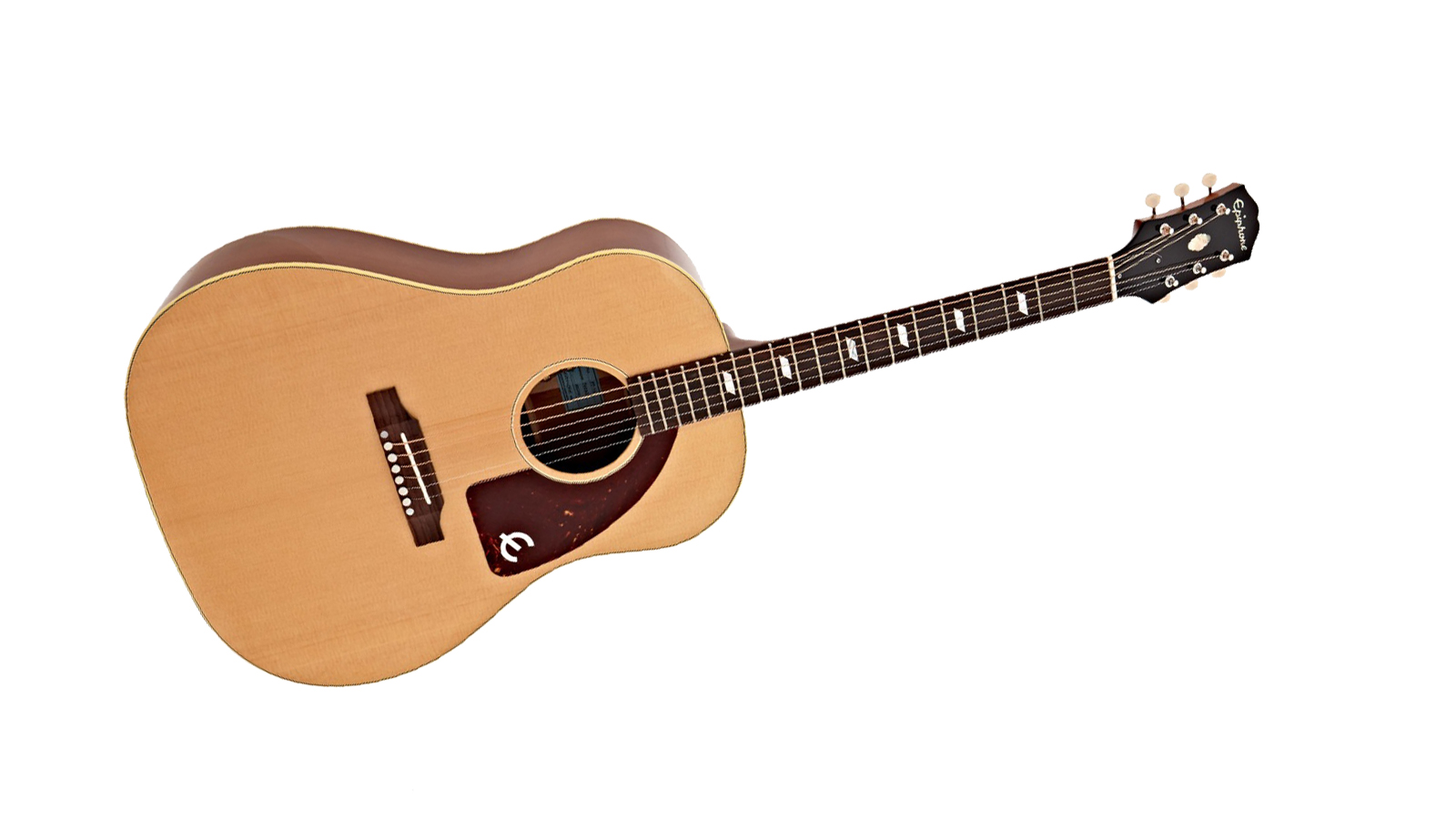
10. Epiphone USA Texan
Our expert review:
Specifications
Reasons to buy
Reasons to avoid
Played by legends such as Paul McCartney and Peter Frampton, it was only a matter of time before Epiphone reissued the Texan to be built at Gibson’s Bozeman plant - and it lives up to expectation.
The Texan gets its charm and charisma from the classic combination of a Sitka spruce top and mahogany back and sides. Thankfully, its slope-shouldered design allows it to sit in the ‘comfortable dreadnought’ region of playability, allowing you to make the most of the smooth low end and punchy balanced mids that make this guitar so ideal for pop, country, rock ‘n’ roll - you name it.
Built with the utmost care and attention to detail, you’ll be struggling to find anything on this guitar that doesn’t scream quality - and yes, we know it’s an Epiphone. In all honesty, that’s our only gripe, and we know it seems petty. For north of two grand, the world of Gibson starts to open up. If you’re looking for something to play and love and keep forever, then this could be perfect, but if you’re investing your money in a guitar? We’d probably take a Gibson.
FAQs
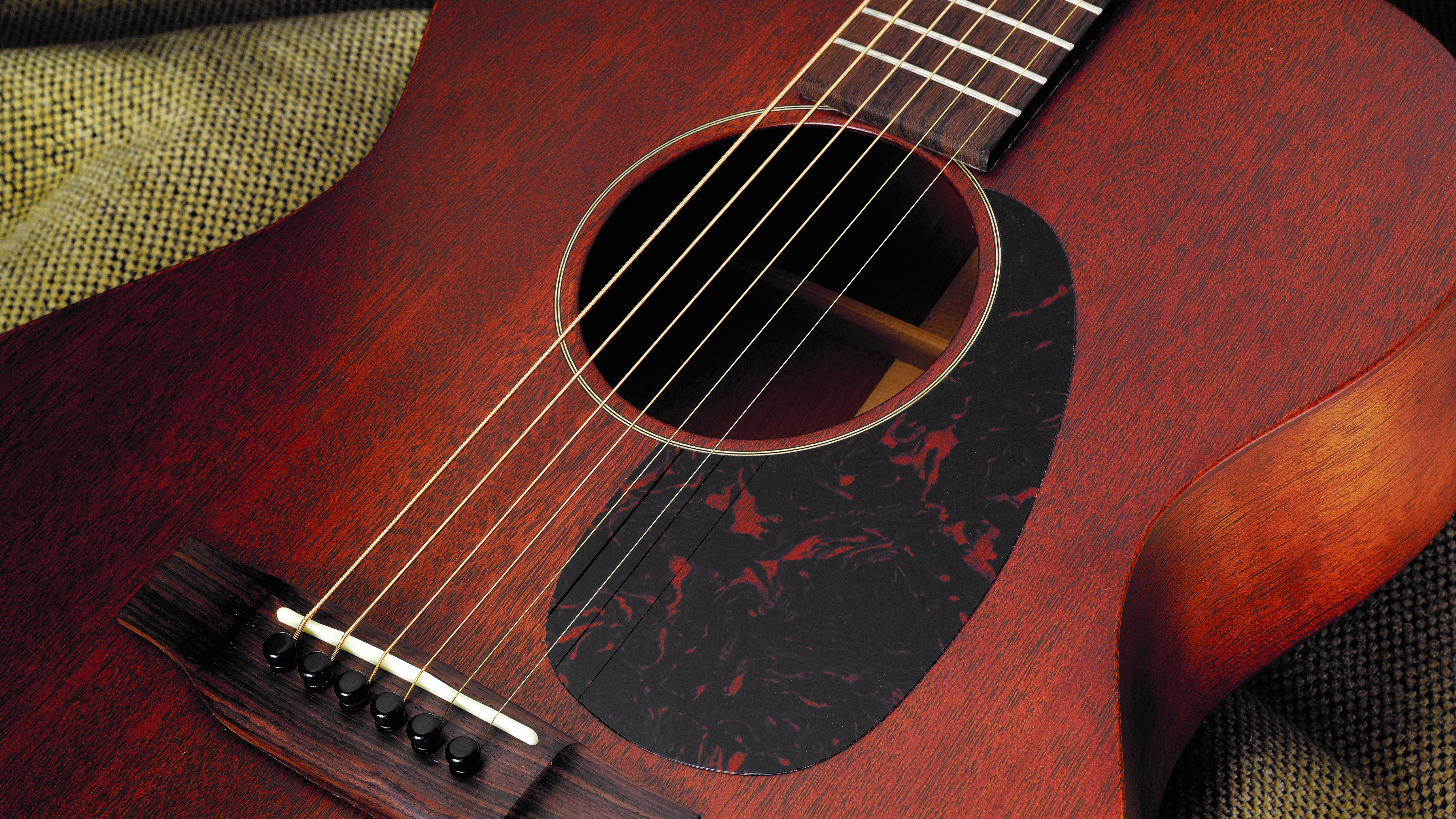
Choosing the best acoustic guitar for you
You can trust Guitar Player.
For something that can look so similar, the many different versions of the acoustic guitar available to players today all have striking differences that can really help yield a wildly different playing experience. Things like tone, the response you get from your picking hand and how comfortable it is to play can all differ from model to model.
Which tonewoods should I choose?
The tone of an acoustic guitar is determined a lot by the wood it’s made from. Solid wood moves and resonates more, so essentially it sounds better – it also costs more. A guitar with its body made from all solid wood will likely yield a richer, stronger tone than a guitar made from laminate wood. A nice middle ground however is a guitar with a solid top and laminate wood back and sides.
The top wood has a fairly crucial role in the guitar’s tone, and there are different options that players love, the most popular being spruce and mahogany.
Spruce: When discussing the best acoustic guitars, you’ll almost always encounter spruce. It’s one of the most common tonewoods due its availability, sustainability and consistent tonal qualities. It’s generally very versatile but can help lend rich mid and upper range frequencies, allowing your guitar to cut through nicely.
Mahogany: Often described as ‘woody’ or ‘smooth’ sounding, these are often more intimate sounding guitars and have a strong low end presence, along with a clear mid range. They’re popular with a lot of guitarists, but old-school blues players do gravitate towards mahogany.
Cedar: Cedar isn’t quite as popular as spruce or mahogany, but it isn’t uncommon. It can be very rich, full, slightly dark and warm. It’s quite a light wood, so some fingerstyle players like it as the top requires less energy to get it moving.
Which acoustic body type should I choose?
The shape of the guitar’s body also affects how it sounds, and how it reacts to your playing. Big bodied guitars are often favored by heavy strummers, as the larger top is able to move more when strummed hard. They can still be dynamic, but there’s more volume on tap for those that need it. You also tend to get a stronger bass response for big bodied guitars, like jumbos.
Conversely, lighter handed players might like a small bodied guitar. The smaller top requires less energy to get it moving so they can explore their dynamic range more easily. Something in the middle like a grand auditorium will give the best of both worlds for some guitarists.
The dreadnought is the most common acoustic guitar shape and will normally have a strong bass response as well as a rich top end, with a slight natural mid scoop (great for vocals to sit). Fingerpickers and flatpickers alike have found themselves at home with a dreadnought over the years.
Do the back & sides make a difference on an acoustic guitar?
Absolutely - although not quite as much as you’d think. Obviously, as the back and sides are attached to the rest of the guitar and resonate with each pluck of a string, they do have a bearing on the overall tone of the instrument. But, when you take into consideration the fact that the main point of string contact and resonance (the bridge) is on the top of the guitar, and that every string vibration passes through that point, you can safely assume that the top makes up a significant proportion of the tone produced.
Obviously, a guitar with a solid back and sides will resonate more freely and richly than something with a laminate back and sides, but beyond that, the difference is pretty minimal. Mahogany, rosewood, koa - they’ve all got their own characteristics, but buying something specifically for the body wood may become a futile task. Look out for that combination of woods that really catches your eye (or ear). For some, it’s spruce and mahogany; for others, cedar and rosewood. The only way to find out is to play them.
How much should I spend on an acoustic guitar?
While there’s no straight cut answer, we would suggest avoiding anything under $/£200, if possible. It’s around here that you start getting good quality starter guitars, with hardware that will retain tuning and intonation. You might get a solid top around this price, but chances are you’ll have to pay a little more for that. If you are just starting out, you probably don’t need to spend more than $/£600.
Intermediate players are likely to find something that works for them anywhere between $/£500-1,500. Of course you can spend more, and you’ll get a better guitar, but within this price bracket, you’re going to get some great workhorses that will stand up to the rigours of regular gigging and recording.
All solid guitars and US-made guitars hover probably just above this price point, and that’s where you start seeing professional grade flat-tops. Is a 10k guitar five times better than a 2k guitar? It doesn’t necessarily work like that, but when you’re in the upper price points, you’re likely going to be investing in a guitar, rather than just buying one.
How we test
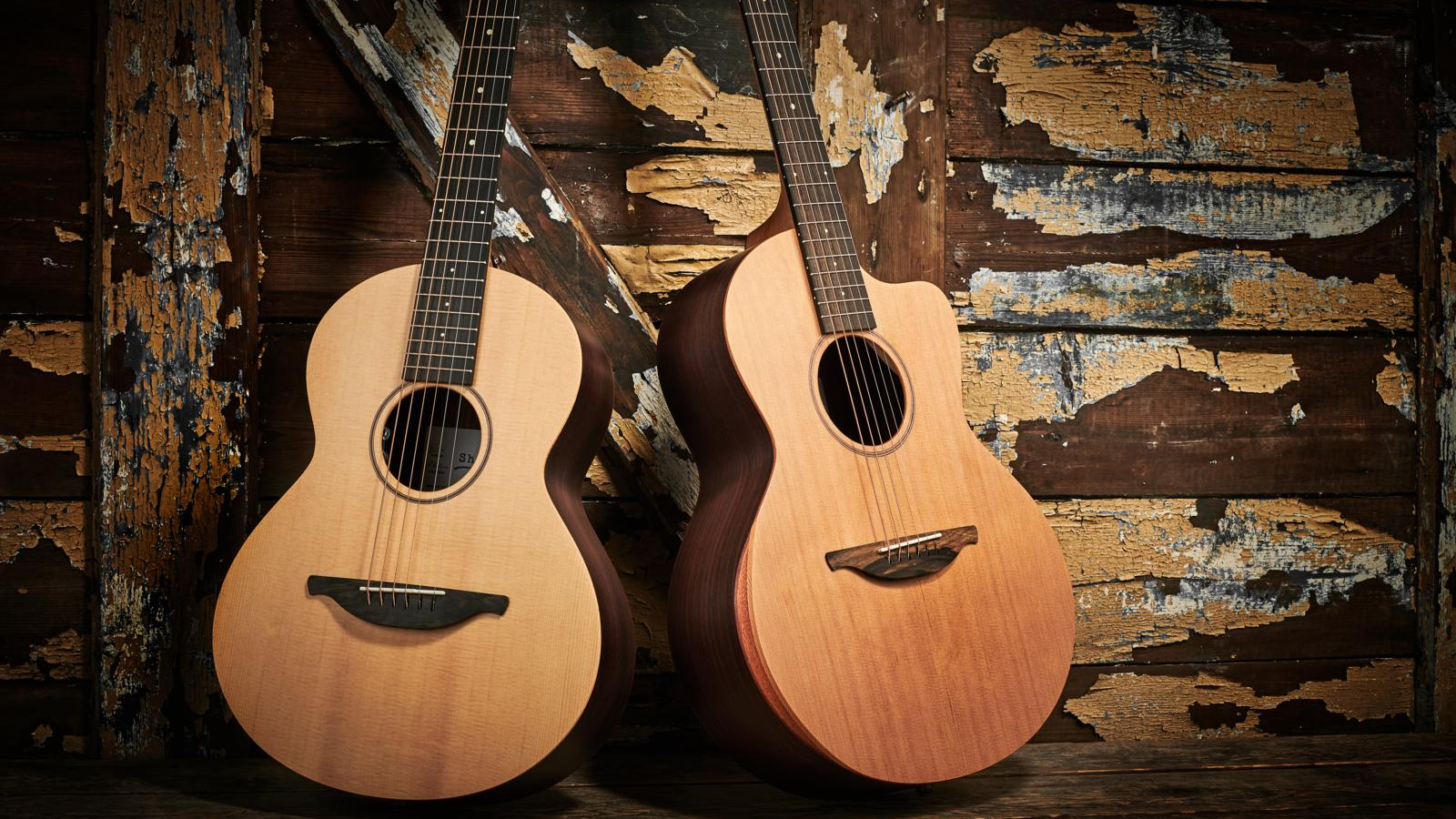
At Guitar Player, our team of writers aren't just music enthusiasts; we're real-life musicians. Our hands-on experience with acoustic guitars ensures that our reviews and recommendations are backed by practical knowledge and real-world testing.
When we get our hands on a new acoustic guitar to test out, the first thing we'll look at is the specs and features of the instrument in question. We'll start by looking at the composition of the guitar, its top and body woods, neck construction, what type of bridge it has, the type of tuning machines, the bracing pattern, and anything else that can affect the sound and playability.
Looking at these things helps us inform our review, as specs will tell you a lot about who the guitar is intended for. Whilst we're doing this, cross-referencing with any literature provided by the manufacturer, we'll also be examining the build quality in depth. We're looking for any potential issues with the way the guitar is put together, whether that's the fret ends, how the binding is at the edges, even down to the placement of the fret dots.
Once we're satisfied we've got a well-put-together instrument, the next thing is to test the playability. Here we'll get a good feel for the neck profile, trying various playing techniques to establish how it reacts under strumming, fingerpicking, and hybrid picking. We'll judge how easy it is to fret barre chords and how it feels under legato, paying close attention to the overall feel of the instrument.
Whilst this is happening, we'll of course be paying attention to how it sounds, but we'll always be sure to specifically test the sound to see how it stands on its own. Here we'll use our years of guitar listening expertise to judge where it sits in the pantheon of acoustic guitars, whether it's a big body jumbo with a huge low end, or something smaller that perhaps has more energy in the mid-range. We'll try various pieces we already know to compare to other guitars we've played, even going as far as to record the guitar to see how it fits into a mix.
Ideally, we like to test guitars for as long as possible, with two weeks being a good amount of time to get to know an instrument intimately. Living with an instrument is so important, and often you can only really gauge the greatness of something once you've spent some time with it.
Read more on how we test gear and service at Guitar Player.
Related buying guides
- Unplug with the best acoustic guitars under $1,000
- These are the best acoustic guitar strings
- Take your acoustic tone to the next level with the best acoustic guitar pedals
- Save some cash with the best acoustic guitars under $500
- Harness the dynamic warmth of the best classical guitars
- Best 3/4 acoustic guitars: Diminutive acoustics with substantial tone
Get The Pick Newsletter
All the latest guitar news, interviews, lessons, reviews, deals and more, direct to your inbox!
First and foremost, I'm a guitar enthusiast – a fanatic, some might say. I'm a firm believer that most of the world's problems can be solved with a Gibson SG and a catastrophically loud amp. Before writing about guitars for a living as a Senior Deals Writer on Guitar Player, I worked in music retail for 7 years, giving advice on guitars, basses, drums, pianos, and PA systems. I also have a passion for live sound; I'm a fully qualified sound engineer with experience working in various venues in Scotland.
- Ross Holder
- Matt McCrackenJunior Deals Writer
- Richard Blenkinsop
“I felt myself starting to cry.” Eric Clapton’s 'MTV Unplugged' Martin acoustic returns in two guises. But Slowhand’s affinity for the guitar brand began long before that seminal live performance
"I have a Mercury on the guitar now, which makes me very happy.” Brian May’s new signature Gibson SJ-200 features a subtle tribute to the late Queen singer Freddie Mercury
